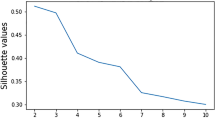Abstract
Unfair nature of doping practises adopted by dishonest sportsmen to increase their performance is posing a challenge to sports administrators worldwide. This involves giving them blood transfusions, using anabolic steroids, or even taking hormone-based medications like erythropoietin to improve their performance by increasing their strength, stamina, and endurance. Even while erythropoietin may be directly detected and identified in athlete blood samples, not all doping instances are easily identifiable, and certain tests are too expensive to perform on every sample. This makes it necessary to create an indirect technique based on many blood biomarkers to identify erythropoietin in blood samples. This study suggests a unique method for detecting steroids in athletes by combining machine learning models with quantum computing-based photon analysis. The information is gathered through medical examinations of athletes, after which photonic analysis is performed and the blood samples are categorised for steroid detection. Regressive Gaussian neural networks based on active equalisation are used to analyse the blood sample. The accuracy, mean average precision, F-1 score, positive predictive value, and mean average precision are all measured throughout the experimental study. The most significant injury risk variables may be found and players at high injury risk can be identified using current machine learning techniques. The proposed technique accuracy 97%, mean average precision 93%, positive predictive value 83%, F-1 score 89%.





Similar content being viewed by others
Data availability
All the data’s available in the manuscript.
References
Alghamdi, W.Y.: A novel deep learning method for predicting athletes’ health using wearable sensors and recurrent neural networks. Decis. Anal. J. 7, 100213 (2023)
Castellanos, J., Phoo, C.P., Eckner, J.T., Franco, L., Broglio, S.P., McCrea, M., CARE Consortium Investigators April Hoy Louise Kelly Jonathan Jackson Tim Kelly Thomas Buckley James R. Clugston Justus Ortega Anthony Kontos Christopher C. Giza Jason Mihalik Steve Rowson: Predicting risk of sport-related concussion in collegiate athletes and military cadets: A machine learning approach using baseline data from the CARE Consortium Study. Sports Med. 51, 567–579 (2021)
de Leeuw, A.W., van der Zwaard, S., van Baar, R., Knobbe, A.: Personalized machine learning approach to injury monitoring in elite volleyball players. Eur. J. Sport Sci. 22(4), 511–520 (2022)
Ergene, M. C., Bayrak, A., Çevik, M., & Ceylan, M.: Evaluation of deep learning models for lower extremity muscle segmentation in thermal imaging. In: MICCAI Workshop on Artificial Intelligence over Infrared Images for Medical Applications (pp. 109–120). Cham: Springer Nature Switzerland. (2023)
Haller, N., Kranzinger, S., Kranzinger, C., Blumkaitis, J.C., Strepp, T., Simon, P., Stöggl, T.: Predicting injury and illness with machine learning in elite youth soccer: a comprehensive monitoring approach over 3 months. J. Sports Sci. Med. 22(3), 476 (2023)
He, K.: Prediction model of juvenile football players’ sports injury based on text classification technology of machine learning. Mob. Inf. Syst. 2021, 1–10 (2021a)
He, Y.: Athlete human behavior recognition based on continuous image deep learning and sensors. Wireless Networks, 1–12. (2021)
Huang, C., Jiang, L.: Data monitoring and sports injury prediction model based on embedded system and machine learning algorithm. Microprocess. Microsyst. 81, 103654 (2021)
Jauhiainen, S., Kauppi, J.P., Leppänen, M., Pasanen, K., Parkkari, J., Vasankari, T., Äyrämö, S.: New machine learning approach for detection of injury risk factors in young team sport athletes. Int. J. Sports Med. 42(02), 175–182 (2021)
Jiang, X.: Obstacles and regulation deconstruction of athletes’ psychological training based on machine learning algorithm in physical education teaching. Int. Transact. Electr. Energy Syst. (2022)
Lee, S. Y., Park, J. H., Yoon, J., Lee, J. Y.: A validation study of a deep learning-based doping drug text recognition system to ensure safe drug use among athletes. In: Healthcare (Vol. 11, No. 12, p. 1769). MDPI. (2023)
Liu, H.: Value evaluation of knee joint sports injury detection model-aided diagnosis based on machine learning. Front. Phys. 11, 1166275 (2023)
Long, T.: Research on application of athlete gesture tracking algorithms based on deep learning. J. Ambient. Intell. Humaniz. Comput. 11, 3649–3657 (2020)
Luo, J., Hu, Y., Davids, K., Zhang, D., Gouin, C., Li, X., Xu, X.: Vision-based movement recognition reveals badminton player footwork using deep learning and binocular positioning. Heliyon, 8(8). (2022)
Nassis, G., Verhagen, E., Brito, J., Figueiredo, P., Krustrup, P.: A review of machine learning applications in soccer with an emphasis on injury risk. Biol. Sport 40(1), 233–239 (2022)
Raymond, S.J., Cecchi, N.J., Alizadeh, H.V., Callan, A.A., Rice, E., Liu, Y., Camarillo, D.B.: Physics-informed machine learning improves detection of head impacts. Ann. Biomed. Eng. 50(11), 1534–1545 (2022)
Wang, Q., Tao, B., Han, F., Wei, W.: Extraction and recognition method of basketball players’ dynamic human actions based on deep learning. Mob. Inf. Syst. 2021, 1–6 (2021)
Xie, J., Chen, G., Liu, S.: Intelligent badminton training robot in athlete injury prevention under machine learning. Front. Neurorobot. 15, 621196 (2021)
Xiong, W., Huang, D., Xu, W.: Big data and deep learning model for FMS score prediction of aerobics athletes. Sci. Program. 2021, 1–7 (2021)
Zhang, C., He, H.: Research on pose recognition algorithm for sports players based on machine learning of sensor data. Secur. Commun. Netw. 2021, 1–8 (2021)
Funding
This research not received any fund.
Author information
Authors and Affiliations
Contributions
CN—Conceived and design the analysis, Writing- Original draft preparation. Collecting the Data, ML—Contributed data and analysis stools, Performed and analysis, Performed and analysis LG— Wrote the Paper, Editing and Figure Design.
Corresponding author
Ethics declarations
Conflict of interest
There is no conflict between us.
Ethical approval
This article does not contain any studies with animals performed by any of the authors.
Additional information
Publisher's Note
Springer Nature remains neutral with regard to jurisdictional claims in published maps and institutional affiliations.
Rights and permissions
Springer Nature or its licensor (e.g. a society or other partner) holds exclusive rights to this article under a publishing agreement with the author(s) or other rightsholder(s); author self-archiving of the accepted manuscript version of this article is solely governed by the terms of such publishing agreement and applicable law.
About this article
Cite this article
Ning, C., Li, M. & Ge, L. Early steroid detection in athlete players using quantum photonics and machine learning model based analysis. Opt Quant Electron 56, 591 (2024). https://doi.org/10.1007/s11082-023-06130-8
Received:
Accepted:
Published:
DOI: https://doi.org/10.1007/s11082-023-06130-8




